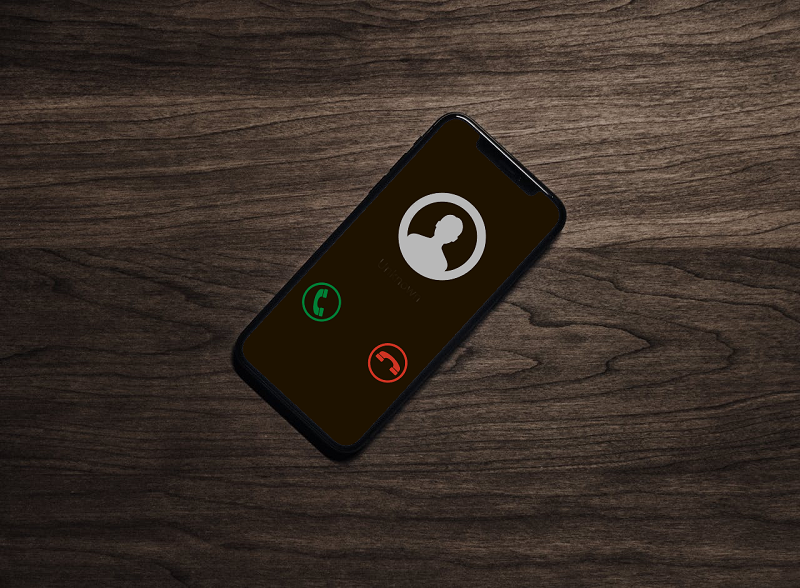Protection against scammers:
Most common methods of fraud and theft
One well-known fact is that thievery as a “profession” has existed since time immemorial, preceding even the appearance of money as modern people know it. Any field that concerns any sort of property relations has always had, and perhaps will always have those who aim to steal and keep what belongs to others.
The development of technology makes all the instances of fraud balloon to truly epidemic proportions. Scammers nowadays gain more and more tools for deceiving – and they don’t just deceive those close to them, as they did before the evolution of cheap and user-friendly means of global communication. Any person living on planet Earth can become their victim, and the number of victims as a whole can reach hundreds and even thousands.
One of such universal fraud methods is phone scam, which many people have heard about. Unfortunately, some people have also suffered from this scam themselves. Almost everyone has a friend or a relative who took the bait and lost money, sometimes all the money he or she had, in the process. Scammers usually target the most vulnerable groups, such as children, the elderly, and pregnant women, but no one is fully safe from their tricks. Browse the news regarding phone scammers on the Internet, and you will notice that people of any age and practically any profession can be subject to fraud-induced harm.
Why do so many people believe scammers? What is so convincing about their methods? This article will touch upon the most common fraud schemes and their variations that any ordinary person with computer access might encounter. The article will also contain some advice on how to protect yourself against said schemes.

PHONE SCAMMERS: WHAT THEY ARE AFTER AND HOW TO PROTECT YOURSELF
For convenience, let us divide scammers into two groups: those who contact their victims via phone and e-mail.
Essentially, they all pursue one of the following goals:
- to get their hands on your personal data;
- to discover your bank card data;
- to gain control of your bank account (learn your password, change the associated phone number);
- to make a payment on your behalf and trick you into telling them an SMS verification code;
- to force you to make a payment yourself, or to have you transfer money to their accounts;
etc.
We will describe individual types of phone scam below, but before that, allow us to give general advice on how to protect yourself from phone scammers. First of all, do not be afraid to end the call and contact the organization (using the official number) a scammer claims to represent to confirm if they have been trying to reach you. If you are told of an accident involving a family member, try reaching the family member in question. Naturally, the safest course of action would be to never talk to unknown callers at all and not let them intimidate you or your family. Use a call blocker so that numbers outside of your contact list cannot reach you. The call blocker option is also great if you suspect some of your gullible family members might struggle with resisting professional scammers that call from unknown numbers.
The sections below are dedicated to describing most popular kinds of scam and advising you on how to recognize and avoid them.
POPULAR TYPES OF PHONE SCAM AND HOW TO PROTECT YOURSELF FROM THEM
Banking scam: scam artists pretend to call you at the behest of your bank, and inform you that the safety of your bank account is compromised. You are asked to reveal your bank account information or provide them with various means of accessing your account/computer. If you do, your money is stolen.
You might also receive a verification code via SMS that scam artists ask you to tell them. Both the code and the number you receive the code from are fake and mainly used to give the caller your phone information that will, no doubt, jeopardize your account.
Solution: hang up immediately. If necessary, block your bank card(s). Call the bank using their official number (and dial the number manually), or visit the bank in person to verify their attempts to reach you. Never share any codes you receive via SMS – banks usually don’t ask for them at all. At most, you might be asked for the first and fourth digit of your PIN or anything similar.

Telemarketing scam: scammers call to offer you deals on their products and/or services, and usually do one of the following:
- You are asked to reveal your bank account or credit card data so that they can “confirm” the transaction;
- You are persuaded to pay on your own, using the recipient data they provide.
Your bank information is then used to steal all your money. Some scammers might overcharge you instead and then send you a low-quality product or nothing at all, claiming it got “lost” en route.
Solution: hang up immediately. If the scammers pose as representatives of a known brand and you have doubts whether they are legit, contact the company directly using the numbers provided on their official website or verified account page. And remember: no self-respecting seller or manufacturer will resort to cheap telemarketing.
“Grandparent” (emergency) scam: you receive a message (in rarer cases, a call) that your relative, usually a child or a grandparent, suffered an accident. Scam artists demand you transfer a large sum of money: it might be a “doctor” needing money to perform a surgery, a “police officer” preparing to conduct an investigation, etc. Sometimes scam artists try to take advantage of your kindness by pretending to be a stranger and instead claim it is their relative who got in trouble.
Solution: if your relatives are concerned, call them. Most likely, they will pick up and deny having been hurt. If someone else pretends to be the victim’s relative, ask what their fundraising campaign is called – but never ask for any links directly! Alternatively, just hang up.
Extortion scam: scammers use a more aggressive approach to get their hands on your money. They pretend to represent civil force or any state organization, claim that you are in trouble, and threaten you with arrest, loss of employment, harm, etc. to make you give them your bank account data or transfer all your money to their account. Threats such scammers utilize can range from pseudo-polite “advice” to actual blackmail.
Solution: hang up immediately. Check if your accounts are intact, and block them if needed. Most scammers use empty threats and bet on your gullibility, but if you suspect some of your personal data was might be compromised, contact the authorities. Never send your numbers, photos, or follow any links that scam artists might demand of you.
Money saving scam: the so-called “experts” might try to entice you with easy money: they claim you’ve won a lottery and now need to pay a fee to receive your prize, or a free trial of some product that will turn out to be not so free after a certain period of time. You might be offered to take part in an investment scheme, lower your credit card interest rates, or purchase a car warranty that is very clearly overpriced. All these kinds of scam have a lot in common: they pretend to be urgent or a once-in-a-lifetime chance, they are always unexpected, and they unfailingly demand you pay right away, be it a fee, a deposit, a commission, etc.
Solution: always meet company representatives in person within the premises of the organization. Carefully read any contract form you receive before signing it. Consult with a notary or other certified specialists if needed.

As we can see, the safest solution is to never pick up calls from unknown numbers and have some kind of backup communication method. Unwanted calls can be easily rejected with a call blocker – for example, KnownCalls.
Phone scam is not the only way thieves might use to trick you. They might try to scam you via other platforms as well: e-mail, e-commerce marketplaces, and even real life.
Scammers tend to adapt and change their tactics fairly quickly, so variations of this type of scam might differ.
The aim of such scam is usually one of the following:
- to get your credit card data and steal all your money;
- to gain access to your personal data and use it for other scam campaigns;
- to trick or blackmail you into transferring your money to the scam artist.
To steal your money, scam artists often use phishing sites – websites specifically designed to trick you into revealing your card data. As usual, scammers display one of the two behaviors: they either promise you hearty profit or intimidate.
For example, you receive an e-mail that claims to be from a popular e-market, any government office or its “representative”, or even a company you have never heard of before. The letter informs you of some kind of special offer – a humongous last-minute sale, a government refund, or cashback. You are invited to visit a website to take part in said offer, and if the copied brand is well-known, the site usually has a similar design. The web address might also be intended to replicate the original with a few different letters or similar-sounding contents (for example, “amazonshop” instead of “amazon”). You are then asked to enter your card data as soon as possible before you lose your discount. The web site collects the data you enter, and that data goes straight to scammers who swiftly withdraw all the money from your card.
Sometimes scammers manipulate your haste other than your love for profit. You can receive a so-called “scratchie” message that informs you of a prize worth N dollars. However, said prize is a limited offer and will be sent to someone else unless you urgently pay for its delivery. Such letters tend to look relatively plausible and imitate certain “trustworthy” details like a real company’s credentials, brand color scheme, and even logo. The delivery fee is usually small (especially compared to the stated cost of the prize), which makes you think that you only risk a tiny sum. In reality, all the money on your card is at risk. If you enter your card data on the website listed in a scam letter, the data will become known to scammers.
Some scam artists bet on your fear. You might receive an official-looking letter from your “government”, “bank”, or “cell carrier” who claim that your data has been jeopardized – for example, a third party got access to it, or that you are required to “renew” your phone number in order not to lose it. They ask you to visit their website and enter personal information (phone number, passport details, address, etc.), which is then passed to scammers and most likely used in other fraudulent schemes, including phone scams.

One scam type involves a voluntary(!) money transfer that scammers deceive or outright threaten you to make. This scam usually falls into one of the two categories: inheritance notice and the “I know what you did” message.
The first scheme usually works as follows: you receive an e-mail from a lawyer, a banker, or a foreign official who claims that a distant relative or a generous billionaire has chosen you to receive a large inheritance. You only need to pay a transfer fee – a significant amount that nonetheless pales in comparison to the size of your “inheritance”. If the victim falls for the scheme and pays the fee, scammers might keep milking this person for more: something went wrong, so they need a bit more money, then some more for good measure, then the victim is offered a refund for all the money paid, but another fee is required to do that, and so on. Some scammers prey on lonely, gullible people by impersonating someone famous: they claim that it was “love at first sight”, and then entice the victim to pay a large sum of money to arrange a meeting in person. Of course, no superstar will ever come to you if you pay, nor will your money return.
Another form of e-mail scam might claim that a certain foreign company is looking for employees and offers you an easy job with unusually high pay (for example, transcribing texts or assembling pens). Similarly to the examples above, you are asked to pay a “simple” fee, cover the cost of job materials, etc. – in other words, invest to start earning, but this is just a scam. You won’t earn any money, only waste it.
Blackmail is another common e-mail scam method. The tactic is simple: a message claims that your computer was infected with a virus that allowed some malicious third party to record you while you were doing something inappropriate, like visiting pornographic websites. The wording tends to be vague and elaborate because scam artists don’t actually have any recordings. They demand a ransom, lest the incriminating information is sent to your colleagues, friends, and family. The Kaspersky antivirus team reports that this old-as-the-hills scam has recently evolved: to appear more believable, scammers mention your, your contacts’, and your relatives’ personal data. As a result, you are tricked into thinking that your are dealing with all-powerful hackers who mean business.
The solution to withstand e-mail scam is fairly simple: do not send your money to anyone. Yes, the offer to become rich overnight is tempting, and you might believe you’ve just stumbled upon a once-in-a-lifetime opportunity, but, sadly, a scam is a scam. You can easily confirm whether the message you received is fraudulent: search the Internet for scam keywords with the words “scam” and “fraud”. Still think the search results are dubious? Ask your friends and family for advice. If you don’t find their opinion convincing either, think hard about whether you are willing to part with every single cent you have for such a feeble chance.

PROTECTION AGAINST SCAMMERS: HOW TO PROTECT YOURSELF AND YOUR LOVED ONES
Even though the underhanded tactics scammers resort to may vary, the nature of such tactics is the same: they either try to gain access to your finances or convince you to “voluntarily” give your money up. We hope that our detailed description of the most popular scam and theft schemes will help you avoid scam artists! Even if you are confident that you are able to tell scammers and lawful individuals apart, the same often cannot be said about other people. To protect your close ones, it is recommended to educate them on the basics of personal security, and at least tell them what kind of information they can and cannot share.
If you are still concerned about your vulnerable family members (e.g., children), and looking for a way to ensure their safety against phone scams, the surest way to protect them is to do it manually with various control tools. For example, phone scams are easily countered by blocking calls from unknown numbers. Apps like KnownCalls that filter incoming calls based on your personalized white-list block unwanted callers instantly, do not rely on your Internet connection, and do not interfere with your means of contacting friends and family – the phone itself is not put on silent mode. The app is free, easy to set up, and contains no ads. The flexible block options and multiple filtering levels make it definitely worth trying! Protect yourself and your loved ones against any unknown callers for free with KnownCalls!

January 25, 2024